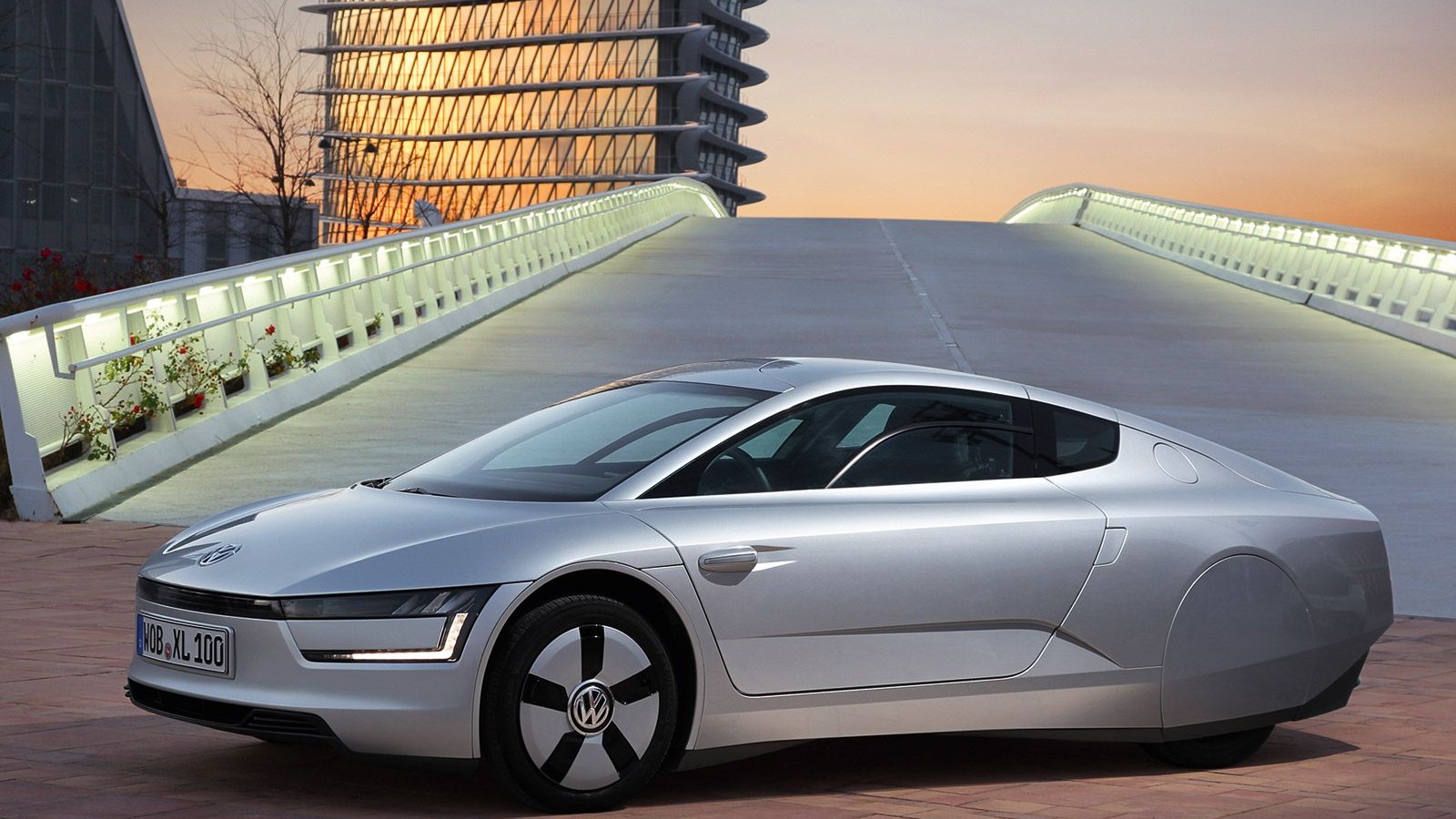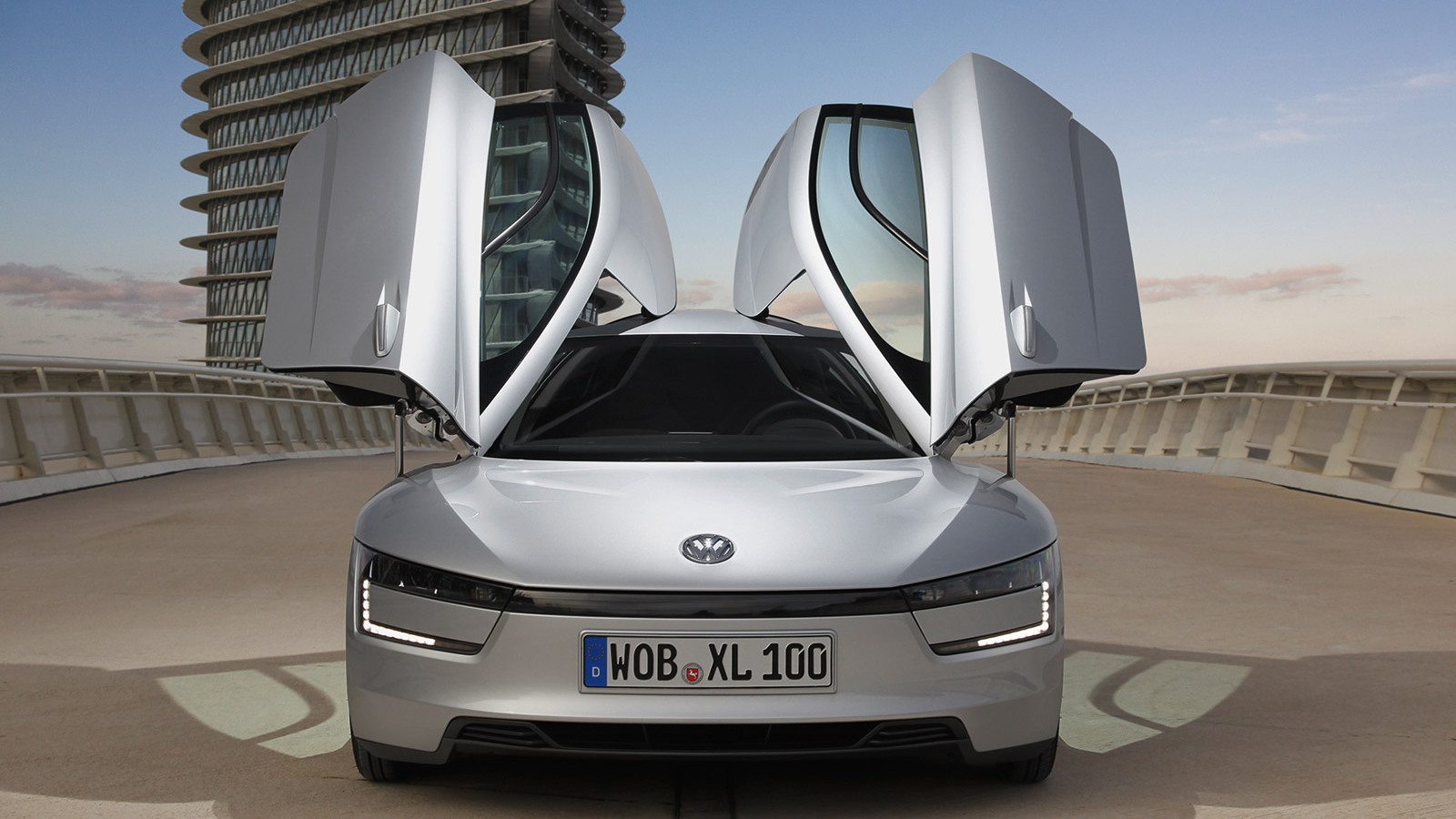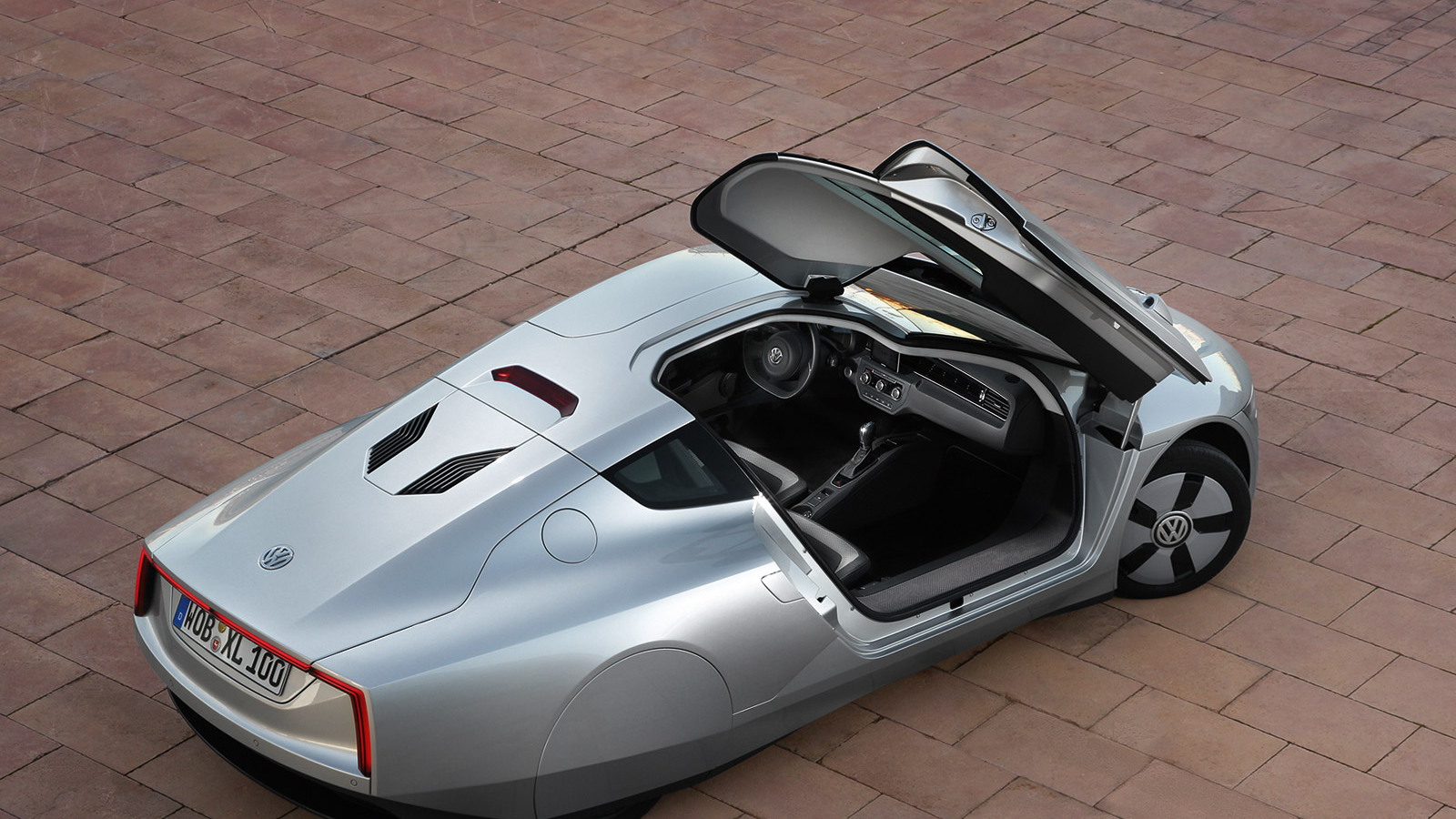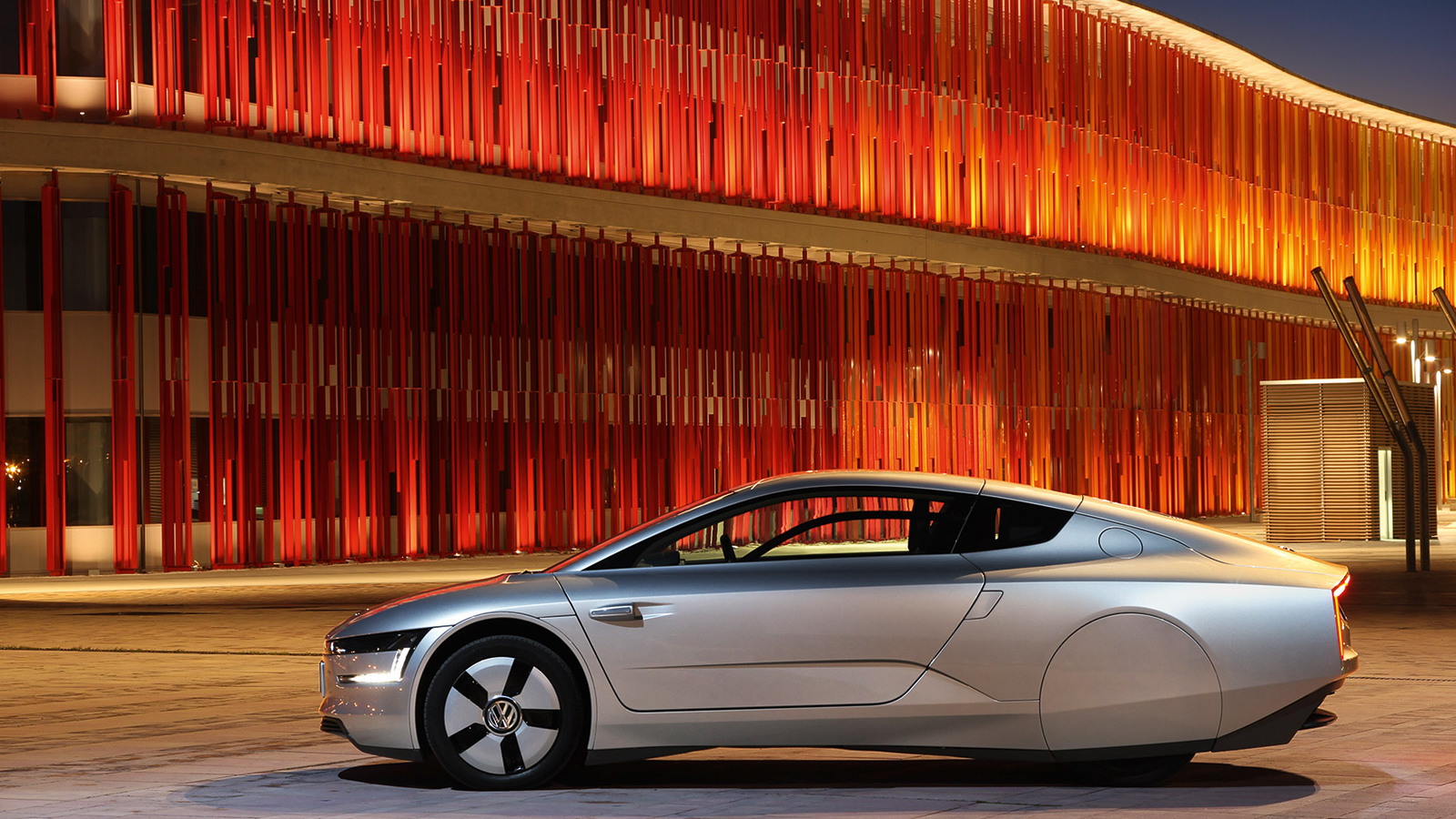Less than six years after promising the world a car capable of returning a fuel economy of 1.0 liter of fuel burned per 100 kilometers driven, roughly equivalent to an insane 235 mpg, Volkswagen has done even better, revealing today, in production trim, a car capable of returning a fuel economy of 261 mpg or about 0.9 liters per 100 kilometers.
That car is the 2014 Volkswagen XL1, which makes its official world debut at the 2013 Geneva Motor Show on March 5.
Already previewed in concept form, and spotted during testing by our own spy photographers, the production XL1 looks every bit as futuristic as you’d expect of a car that could potentially make a return trip across the country on a single tank of fuel.
But as impressive as it looks, the lines of the XL1 are all functional. They contribute to the vehicle’s super-slippery 0.186 coefficient of drag, which is aided by a lack or side mirrors (the XL1 uses reverse-looking cameras) and inset rear wheels.
Other key details include the angular LED headlights, scissor doors and wheel covers.
The XL1 also benefits from a low curb weight (1,752 pounds) and a low center of gravity, which coupled with its low coefficient of drag means it needs just 8.3 horsepower to cruise at a constant speed of 62 mph.
Power comes from an advanced diesel-electric plug-in hybrid system, which matches a 0.8-liter two-cylinder diesel engine with an electric motor and seven-speed DSG dual-clutch transmission. The diesel engine offers a peak output of 47 horsepower on its own, while the electric motor adds an additional 20 kilowatts (26 horsepower) for a combined output of about 73 horsepower.
Volkswagen says its XL1 is good for a 0-62 mph time of about 12.7 seconds and a top speed of 99 mph. These figures aren’t stellar but what do you expect from the world’s most fuel efficient car.
The drivetrain allows multiple driving modes, including electric or diesel only modes, plus a combination of the two. In electric mode, the XL1 has a range of about 31 miles from energy stored in its lithium-ion battery. That’s better that the original 22-mile range the concept version promised.
Note, the 261 mpg rating is only when the batteries are constantly topped up. On a single charge of the batteries, plus a fill of the car’s 10-liter fuel tank, you’re looking at a driving range of just over 300 miles. Without constantly topping up the batteries, you're looking at fuel economy of around 120 mpg.
The XL1 stretches 12.7 feet in length, 5.4 feet in width and 3.8 feet in height. Inside, there’s seating for two plus most of the usual mod cons found in a modern car.

Volkswagen XL1 plug-in diesel hybrid
The structure of the car is a carbon fiber monocoque, with aluminum front and rear crash structures bolted to this. The body panels are also made from carbon fiber and to further save weight the windscreen is just over 0.1 of an inch thick.
Volkswagen hasn’t given us details about how long the battery takes to charge or how much one can expect to pay for an XL1, though we should know more following the car’s launch in Geneva next month. We also don’t know what markets the XL1 will be offered in, though the U.S. is unlikely to be on that list.
Production of the 2014 Volkswagen XL1 is scheduled to commence later this year at the automaker’s plant in Osnabrück, Germany. Only around 50 examples will be built for the initial run, with Volkswagen planning to lift this figure should demand be sufficient.
_______________________________________






